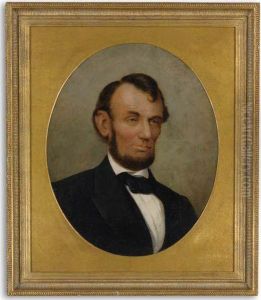David Bustill Bowser Paintings
David Bustill Bowser was an African American artist, born in 1820 in Philadelphia, Pennsylvania. He was an influential figure in the 19th-century art world, particularly known for his work as a portrait painter, sign painter, and ornamental artist. Bowser's heritage was significant in shaping his career; he came from a family that was active in the abolitionist movement, and his grandfather had been a soldier in the American Revolutionary War.
His artistic talent became evident at an early age, and despite the racial barriers of the time, Bowser managed to study art under various mentors. He is believed to have been taught by the renowned American artist Thomas Sully, who was known for his portraits of eminent figures. Throughout his life, Bowser was engaged in the fight against slavery and used his art to support the cause of African American civil rights.
During the American Civil War, Bowser made notable contributions through his artistic skills. He designed regimental flags for African American regiments of the Union Army, most famously the flag for the 127th United States Colored Troops. His work was not just patriotic but also imbued with symbolism for the abolitionist cause and the advancement of African Americans.
After the Civil War, Bowser continued to work as an artist in Philadelphia. He painted portraits of many significant figures of his time, including abolitionists and Civil War heroes. His works were celebrated for their detail and the dignity he conferred upon his subjects, many of whom were leaders in the struggle for equality.
Despite his contributions to art and society, David Bustill Bowser faced racial discrimination and was often not given the recognition he deserved during his lifetime. It was only in later years that historians began to appreciate his work and impact on American art and culture. He passed away in 1900, leaving behind a legacy as a pioneering African American artist and an advocate for social justice.
